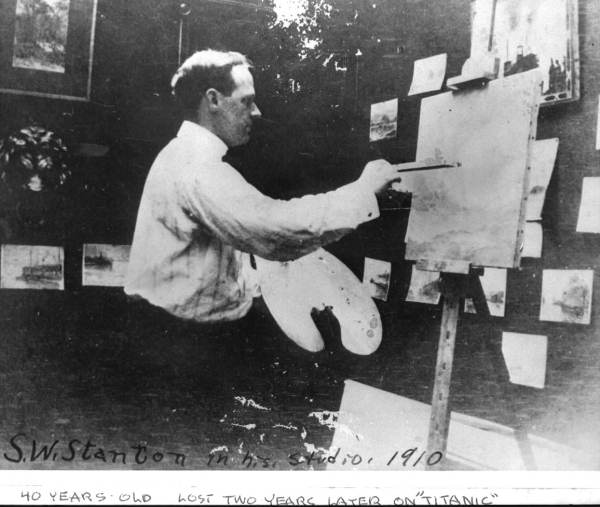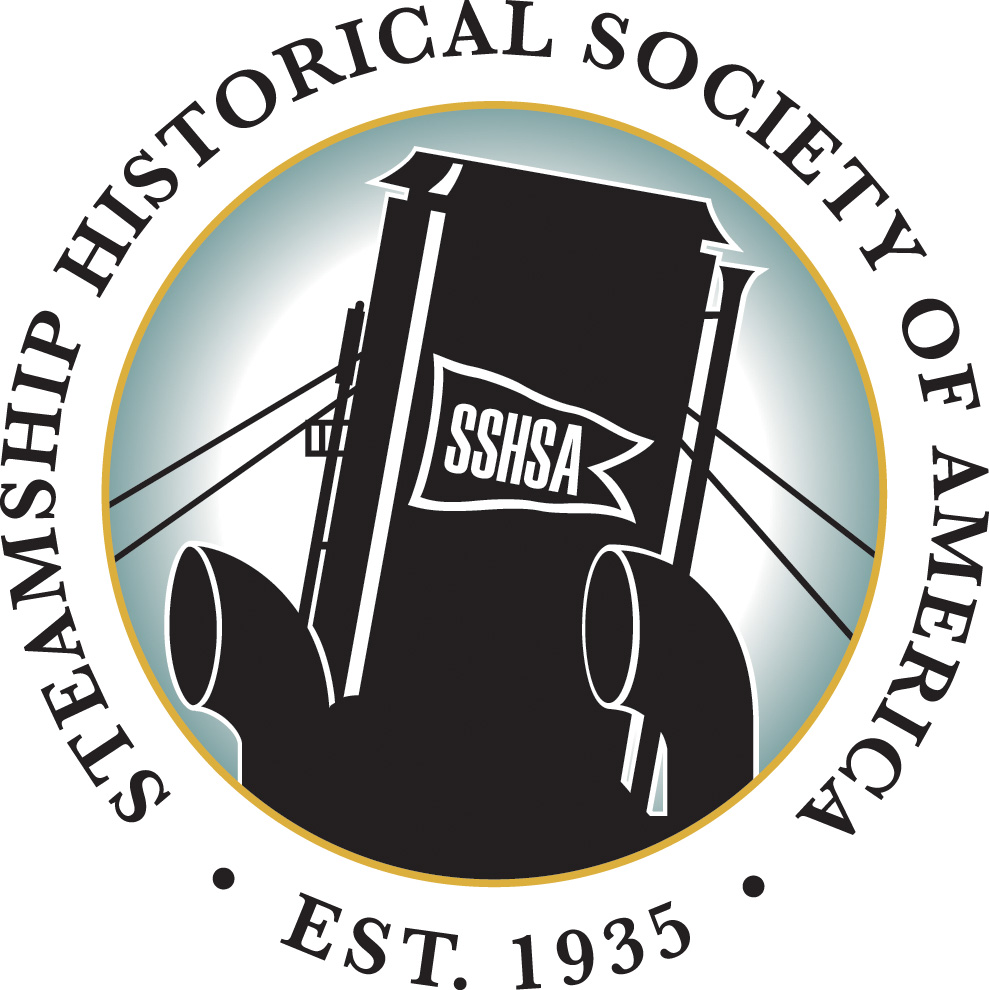
Samuel Ward Stanton in his studio, 1910. He was 40 years old. Photo courtesy of Florida Memory, Florida State Photographic Collection.
ART – A historian and artist, Samuel Ward Stanton (1870-1912) focused his work on American steam vessels. Born in Newburgh, New York, at age eighteen, he began reporting for the Seaboard Magazine. It succeeded the weekly Nautical Gazette, founded in 1871.
His first drawings reproduced in the magazine were of scenes along the Erie Canal. Then it featured his views of American shipyards and the individual ship portraits that gave him fame. The World’s Columbian Exhibition in Chicago in 1893 exhibited the majority of the full page drawings. Stanton received a medal and diploma, which read, “A very finely executed and interesting collection of drawings which show with great skill and cleverness various types of war ships, mercantile ocean steamers, lake and river steamers and yachts. They are of general interest and show artistic merit and historical technical value.”
Samuel Ward Stanton was an associate member of the Society of Naval Architects and Marine Engineers, and in 1909, he served as an aid to the Committee for the Hudson-Fulton Celebration. Stanton produced more than 1,000 images, primarily ink on paper of steamships from the northeast and great lakes regions. American Steam Vessels, published in 1895, represents a good source of information for many of the ships he drew. In 1912, Stanton sought to return home from studying at the Julien Academy in Paris. He planned to visit the Alhambra in Spain in preparation for mural work for the new Hudson River steamer, Washington Irving. On Wednesday April 10, 1912, Stanton boarded the Titanic at Southhampton, England bound for New York City. Like so many others aboard, Stanton died at sea after the Titanic hit an iceberg and sank.
Click on the images below from American Steam Vessels from the Samuel Ward Stanton Collection, SSHSA Archives for a closer look.
Questions for Further Thought
- How can visual arts teach us about history?
- What can you learn about the evolution of marine technology by studying Stanton’s drawings?
Additional Resources
Vallejo Gallery: Marine Art and Artifacts Specialists.
Education Standards
4 ( Grades: K-12 ): Understanding the visual arts in relation to history and cultures

This work is licensed under a Creative Commons Attribution-NonCommercial 4.0 International License.

